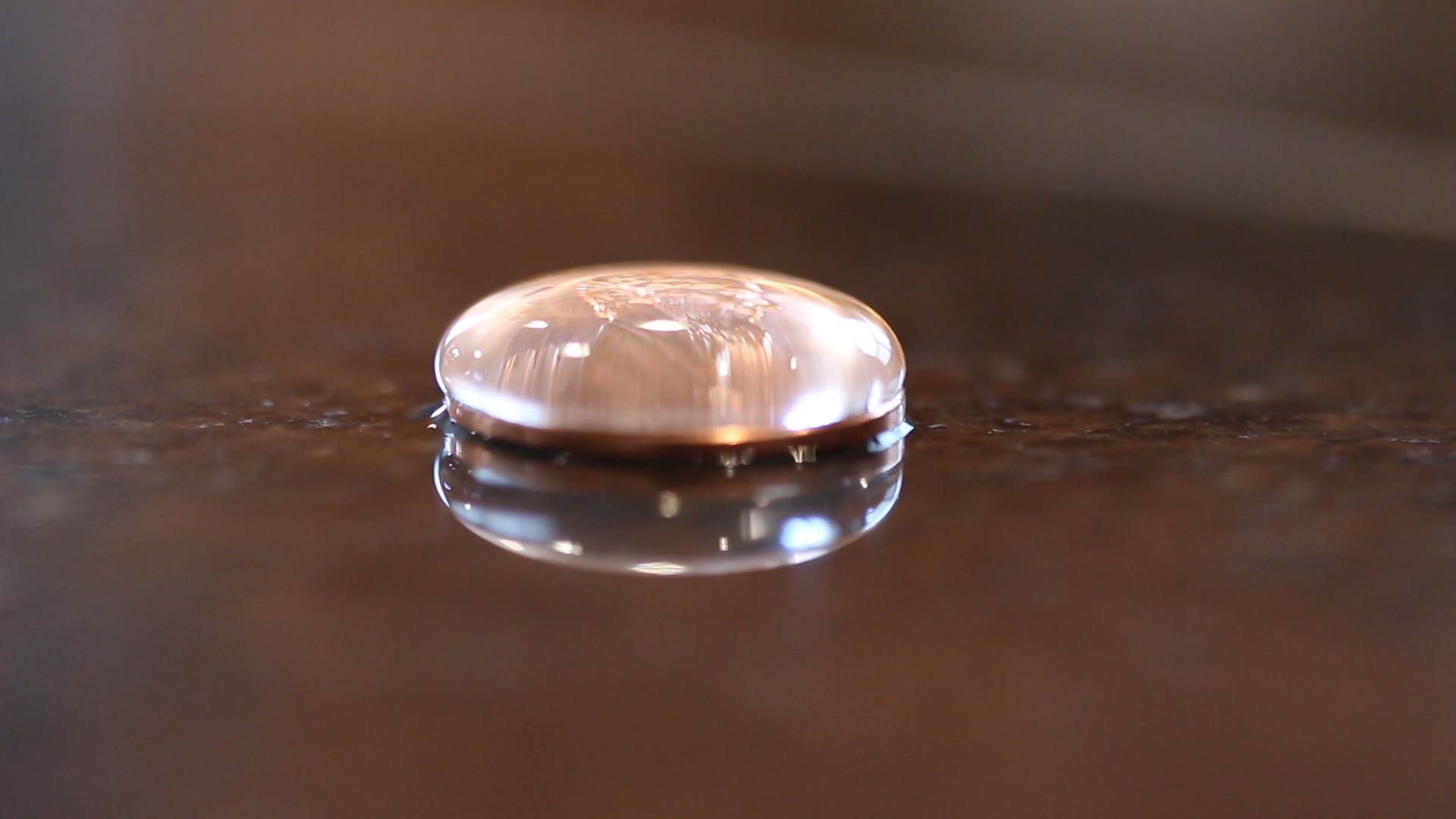Understanding Condensation

Condensation is a common phenomenon that occurs when water vapor in the air transforms into liquid water. This process plays a crucial role in various natural occurrences, including cloud formation and precipitation. In our homes, condensation can manifest as dampness on windows, mirrors, or even on bathroom floors, sometimes leading to concerns about moisture buildup and potential mold growth.
The Science Behind Condensation
Condensation is a result of the interplay between humidity and temperature. When warm, moist air comes into contact with a cooler surface, the water vapor in the air cools down. As the temperature of the water vapor decreases, its ability to hold moisture reduces. This leads to the excess water vapor condensing into liquid water droplets on the cooler surface.
The Role of Humidity and Temperature Differences, Condensation on bathroom floor
Humidity refers to the amount of moisture present in the air. The higher the humidity, the more water vapor is present in the air. Temperature differences play a crucial role in driving condensation. When there is a significant difference in temperature between the air and a surface, condensation is more likely to occur. For example, a cold window pane in a warm room will readily collect condensation as the warm, moist air cools down against the window’s surface.
Condensation on Bathroom Floors: Typical Conditions
Bathrooms are particularly susceptible to condensation due to the combination of factors:
- High Humidity: Showers, baths, and other water-related activities generate a significant amount of steam, increasing the humidity levels within the bathroom.
- Temperature Differences: The temperature difference between the warm, moist air in the bathroom and the cooler floor tiles can be substantial, creating favorable conditions for condensation.
- Poor Ventilation: Inadequate ventilation allows the humid air to linger, increasing the likelihood of condensation.
Causes of Bathroom Floor Condensation: Condensation On Bathroom Floor

The formation of condensation on a bathroom floor is a common phenomenon, often occurring after a hot shower or bath. This moisture buildup can lead to discomfort and even damage to the floor and surrounding areas. Understanding the causes of bathroom floor condensation is crucial for effectively mitigating the issue and creating a healthier, more comfortable bathroom environment.
The Sources of Moisture
The bathroom is a naturally humid environment, with various sources contributing to the overall moisture content. These sources play a significant role in the formation of condensation on the floor.
- Showering and Bathing: The most obvious source of moisture is the steam produced during showering or bathing. Hot water vaporizes, releasing a significant amount of moisture into the air. This steam, when it comes into contact with cooler surfaces, condenses, forming water droplets.
- Washing and Drying Clothes: The process of washing and drying clothes in the bathroom can add considerable moisture to the air. The water used for washing and the evaporation of water during the drying process contribute to the overall humidity levels.
- Houseplants: Houseplants, especially those that require frequent watering, can contribute to the moisture content in the bathroom. The process of transpiration, where plants release water vapor into the air, adds to the overall humidity.
- Leaky Pipes and Faucets: Leaky pipes or faucets can continuously introduce water into the bathroom environment, increasing the overall humidity levels. This constant source of moisture can exacerbate condensation issues.
The Impact of Poor Ventilation
Ventilation plays a crucial role in managing bathroom humidity. Inadequate ventilation can significantly contribute to the formation of condensation on the bathroom floor.
Poor ventilation allows moisture to build up in the air, leading to condensation on cooler surfaces like the floor.
- Limited Airflow: A lack of sufficient airflow prevents the moisture-laden air from escaping the bathroom, allowing it to accumulate and condense on cooler surfaces.
- Inefficient Exhaust Fans: An inefficient or malfunctioning exhaust fan fails to remove moisture effectively, leading to increased humidity levels and condensation.
- Closed Windows and Doors: Keeping windows and doors closed can trap moisture inside the bathroom, preventing it from escaping and contributing to condensation buildup.
The Role of Hot Showers and Steam
Hot showers and baths are the primary contributors to condensation in bathrooms. The steam generated from hot water is the primary source of moisture that condenses on cooler surfaces.
- Steam Saturation: Hot water vaporizes, releasing a significant amount of steam into the air. This steam saturates the air with moisture, exceeding the air’s capacity to hold it.
- Temperature Differential: The hot steam encounters cooler surfaces, such as the bathroom floor, creating a temperature differential. This difference in temperature causes the moisture in the air to condense into droplets on the cooler surface.
- Condensation Formation: As the steam cools, it loses its ability to hold moisture, resulting in condensation on the bathroom floor. The cooler the surface, the more likely condensation is to form.
Identifying Condensation Prone Areas
Condensation is more likely to occur in specific areas of the bathroom, where cooler surfaces are in contact with moisture-laden air.
- Floor Corners: Floor corners are often cooler than other areas, making them prime locations for condensation.
- Areas Near Shower or Tub: The immediate vicinity of the shower or tub is the most likely area for condensation, as it is exposed to the highest concentration of steam.
- Windowsills and Walls: Windowsills and walls can also be susceptible to condensation, especially if they are poorly insulated or exposed to cold temperatures.
Solutions and Prevention
Condensation on bathroom floor – The battle against condensation on your bathroom floor is a war on moisture. It’s a fight that can be won with a combination of strategies, each playing a crucial role in preventing the unwelcome dampness. From improving ventilation to minimizing moisture sources, these solutions offer a path to a dry and comfortable bathroom environment.
Ventilation Methods
Ventilation is the cornerstone of condensation control. It acts as a guardian, whisking away excess moisture before it has a chance to condense on cold surfaces.
- Exhaust Fans: These tireless workhorses are the most effective weapons against bathroom condensation. They draw in moist air and expel it outside, effectively reducing humidity levels. Choose a fan with a high CFM (cubic feet per minute) rating for optimal performance. Ideally, the fan should run for at least 15 minutes after each shower.
- Windows: Opening windows can provide natural ventilation, allowing fresh air to circulate and carry away moisture. However, this method is less effective than exhaust fans, especially in colder climates. It’s best used in conjunction with other strategies.
Improving Bathroom Insulation
Insulation is the shield that protects your bathroom from temperature fluctuations. By reducing heat loss, it prevents cold surfaces from forming condensation.
- Wall Insulation: Insulating your bathroom walls can significantly reduce heat loss, minimizing the temperature difference between the air and surfaces. This can be achieved by adding insulation to existing walls or using insulated wall panels during renovations.
- Floor Insulation: Insulating your bathroom floor prevents heat from escaping through the floor, keeping the surface warmer and less prone to condensation. This can be achieved by adding insulation to the subfloor or using insulated flooring materials during installation.
Minimizing Moisture Sources
Controlling moisture sources is like stemming the flow of water at its source. By minimizing the amount of moisture released into the air, you can significantly reduce the risk of condensation.
- Shower Curtains: Shower curtains act as a barrier, preventing moisture from escaping into the bathroom. Choose a shower curtain made of a water-resistant material and ensure it is properly sealed to the tub or shower stall.
- Wiping Down Surfaces: After showering or bathing, take a few minutes to wipe down the walls, floor, and fixtures with a towel or squeegee. This simple step removes excess moisture and prevents it from accumulating.
- Properly Drying Laundry: Avoid drying laundry inside the bathroom, as this can significantly increase humidity levels. Instead, use a dryer or hang laundry in a well-ventilated area.
